http://henrydoktorski.com/KrishnaKillers.html
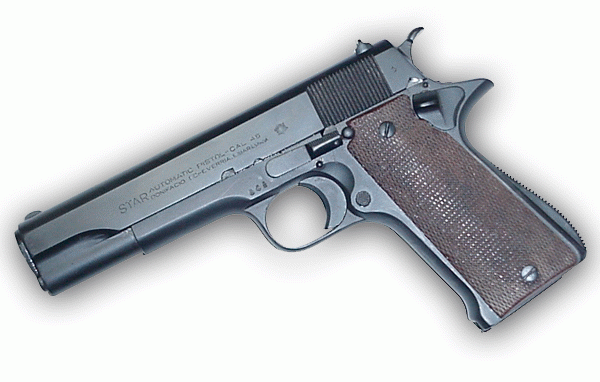
A One Star Model P .45 hand gun, the same gun that killed Sulochan.
“Krishna Killers—The Danger of Deranged Devotion will go a long way to reconcile ISKCON’s most notorious crime, the murder of Sulochan dasa (Steven Bryant). Henry Doktorski bases his treatise on years of research. In the spirit of the biblical quote, ‘The truth will set you free,’ Krishna Killers offers ISKCON followers the truth about their organization’s dark history.” —Nori Muster (formerly Nandini devi dasi), ISKCON Public Relations Assistant and author of Betrayal of the Spirit (University of Illinois Press)
“Bryant was a martyr for his faith. He was one lone voice in the wilderness and he was killed because he talked about corruption. He went up against the heavyweights and he lost.” —Officer Joe Sanchez, Police Department, Berkeley, California
Donors are needed. My goal is to raise 6,000 U. S. dollars ($1,000 for pre-publication work, such as cover design and text formatting, and $5,000 to print one thousand hard-cover books with dust jackets). Large or small, your donation will help. I’ll be happy to provide books for you to distribute to your friends (or enemies). You may:
(2) Send money by PayPal to  .
.
(3) Credit card contributions are accepted at GoFundMe.Com.
Your participation in this landmark publication will be kept anonymous and confidential, if that is your request.
Thank you!
The Author
The 1986 murder of Steven Bryant (Sulochan dasa) was arguably the darkest moment in the fifty-one year history of the International Society for Krishna Consciousness—a new branch of the Chaitanya-Bengali-Vaishnava religion founded in New York City in 1966 by an Indian spiritual teacher and guru, His Divine Grace A. C. Bhaktivedanta Swami Prabhupada (1896-1977). A mere nine years after the disappearance of this beloved spiritual father, one of their own was hunted down and assassinated. This brutal killing was achieved through a cooperative effort by “spiritual” leaders, senior managers and hit men enforcers from West Virginia, Ohio, and Southern California ISKCON temples.
The murdered whistle-blower had discovered many secrets and threatened to reveal to the world the immoral acts and criminal dealings of a set of self-appointed, illegitimate successors to Swami Prabhupada: a corrupt oligarchy of new ISKCON “gurus.” He had also, perhaps foolishly, advocated using violence against the gurus to evict them from their posts. ISKCON leaders took his threats seriously, and they hunted down and assassinated the passionate reformer. How did the peaceful, shaven-headed, saffron-clad Hare Krishna devotees regress from their blissful activities of chanting, dancing, and selling incense in the streets to this?
The author, himself a former ISKCON devotee, probes deeply into the disturbing direction of a new religious movement. In this book, he exposes the danger of philosophical errors and deranged devotion that practically ensured that bloody tragedy would eventually occur. The author has engaged in years of painstaking research by poring over tens of thousands of pages of trial transcripts, newspaper and magazine articles, ISKCON publications, and confidential ISKCON documents, while also interviewing dozens of eyewitnesses. His effort culminates in a thoroughly-engaging and extremely well-documented thesis exposing the hidden inside story of the conspiracy to murder Steven Bryant, including its genesis, development, blunders involved in it, execution, cover up, as well as a stunning aftermath after the deed was done.
The reader may ask, “Can this happen again in ISKCON?” The answer, unfortunately, must be in the affirmative unless measures are immediately instituted to discourage the abuses and atrocities connected to mindless worship of unworthy, bogus gurus, which often characterizes charismatic cults.
Timeline of Important Events |
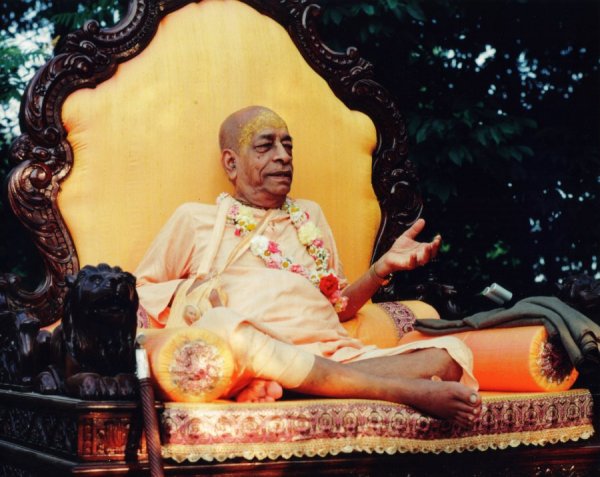
“These rogues [so-called acharyas] are the most dangerous elements in human society. . . . These pseudo-religionists are heading toward the most obnoxious place in the universe [hell] after completion of their spiritual master business, which they conduct simply for sense gratification.” —His Divine Grace A. C. Bhaktivedanta Prabhupada (1896-1977), the Founder/Acharya of ISKCON. Photo taken during his fourth and final visit to New Vrindaban (June 1976). |
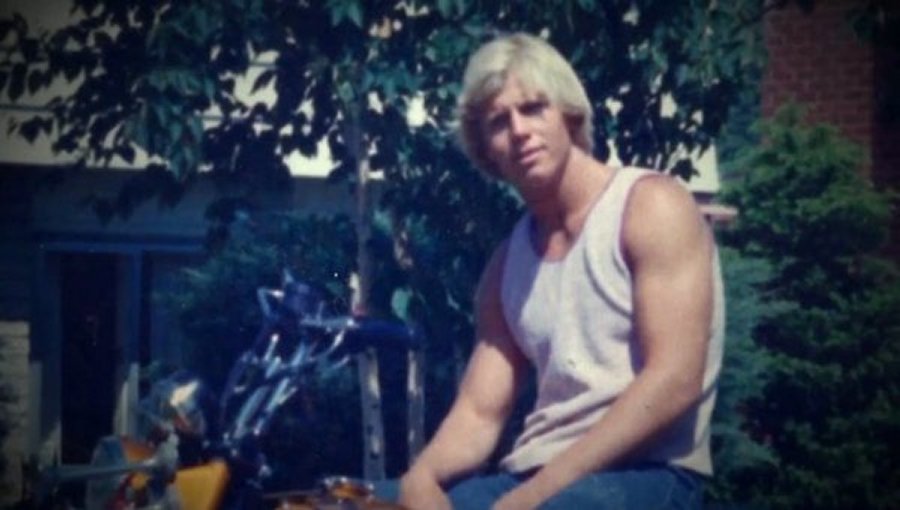 Steven Bryant as a young man in Royal Oak, Michigan (early 1970s). |
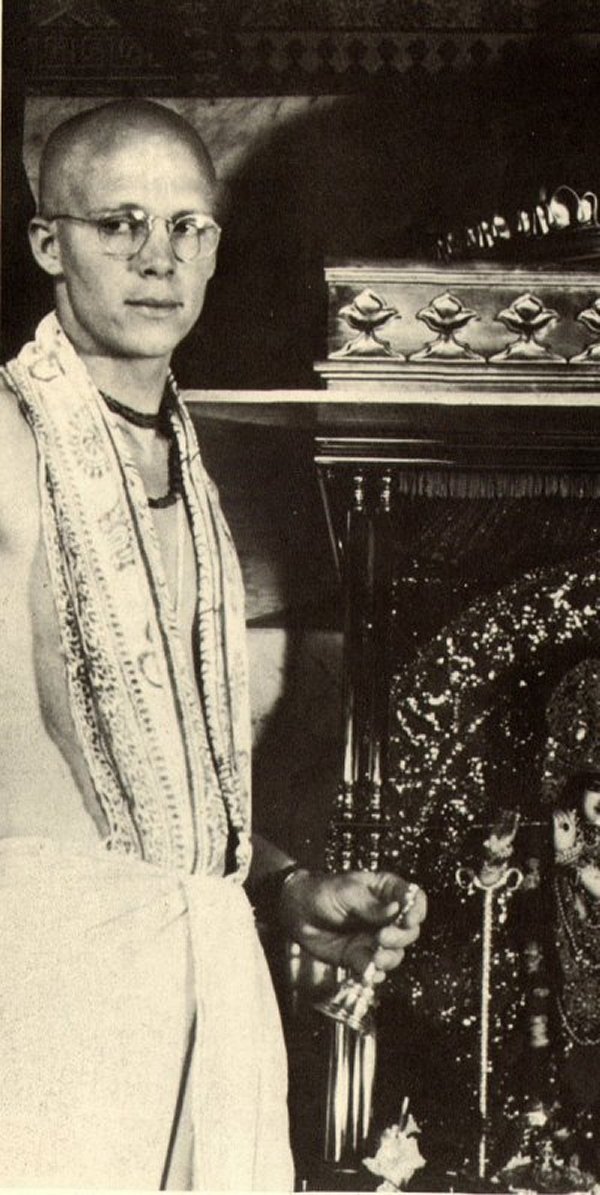
“Since I was approaching Sri Chaitanya Mahaprabhu’s topmost representative, Srila Prabhupada, for guidance and inspiration, I knew the outcome would be auspicious, whatever it was.” —Sulochan dasa Brahmacari (Steven Bryant) on the altar offering aroti, perhaps at Detroit ISKCON (late 1970s). |
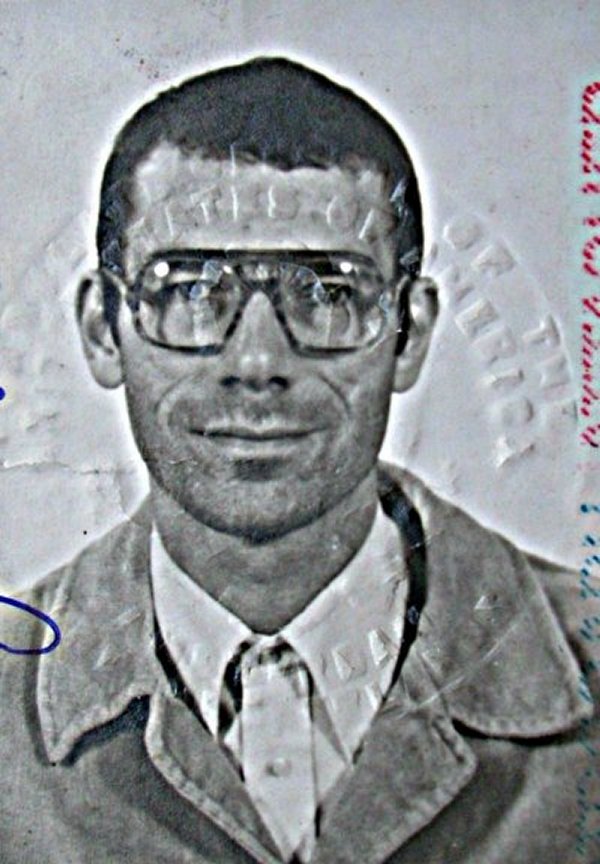
“We just became friends. Everybody liked him [Sulochan]. He was just a very affable kind of guy.” —Puranjana (Tim Lee), long-time critic of the zonal acharyas and Sulochan’s life-long best friend (passport photo, early 1980s). |
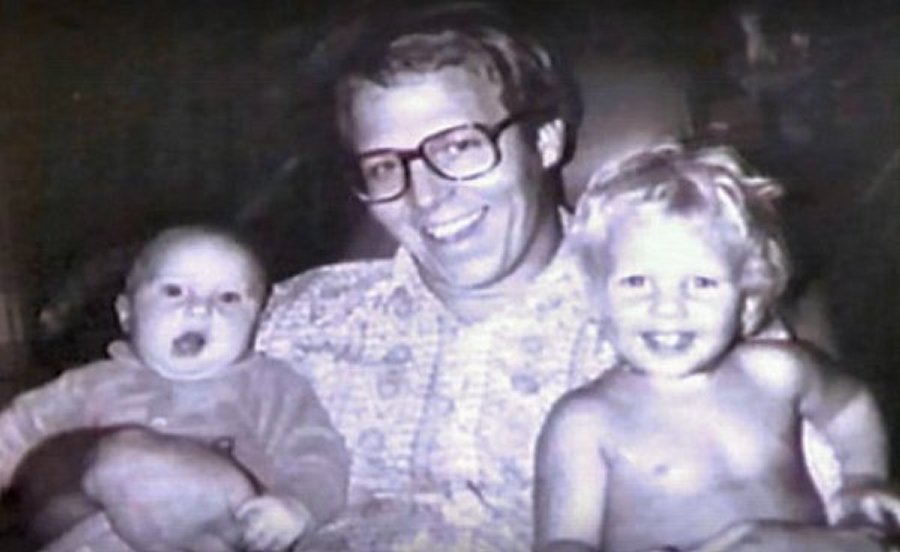
“Look at me now. My heart is devoid of life, and I’m simply the servant of my tongue, belly and genitals—literally a dead body flapping.” —Sulochan dasa Adhikari with his two sons, Nimai and Sarva (c. 1983) |
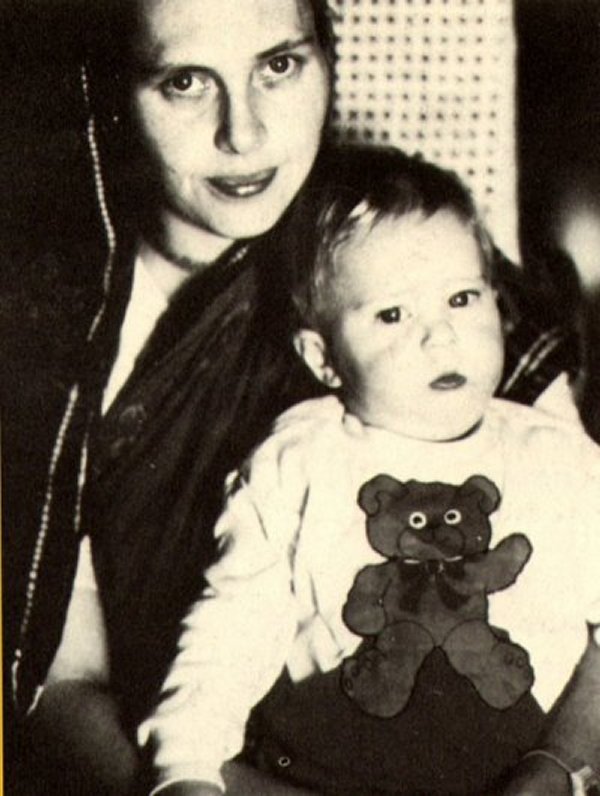
“We [Sulochan and I] were ill matched. Definitely no attraction on my side of the equation. I had no idea what a fiasco it [our marriage] would turn into.” —Sulochan’s divorced wife, Jamuna dasi (Jane Seward), holding her first child by her new husband, Raghunatha (Ralph Seward) (c. 1988). |
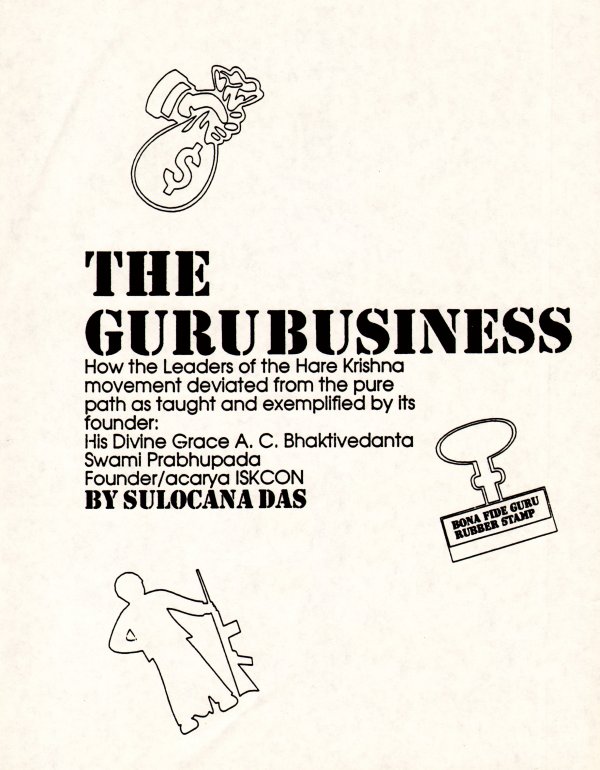 Cover of Sulochan’s book, The Guru Business. |
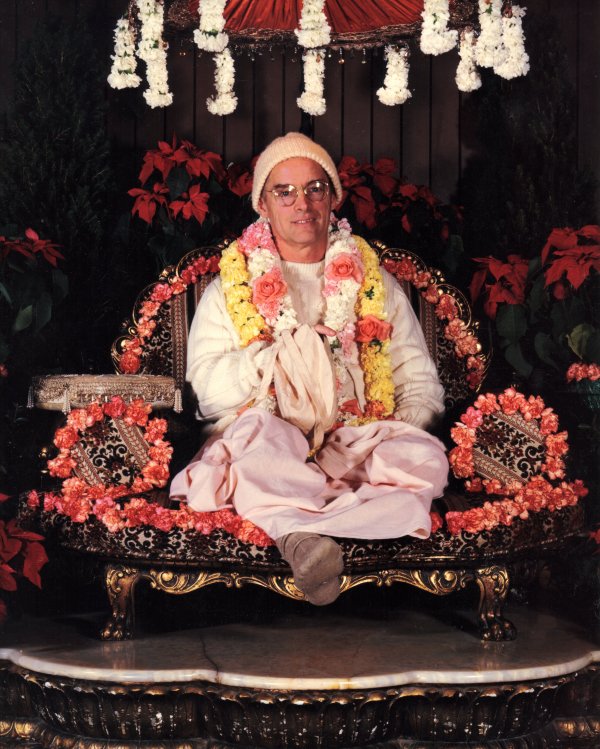
“If Tirtha [Thomas Drescher] takes the whole thing, and no other boys get caught, then he’ll go back to Godhead at the end of this lifetime.” —“His Divine Grace” Kirtanananda Swami “Bhaktipada” (Keith Gordon Ham), the ISKCON zonal acharya at New Vrindaban, known as “Number One.” Here on his vyasasana (throne) at the newly-dedicated RVC temple at New Vrindaban. Publicity photo (1983). |
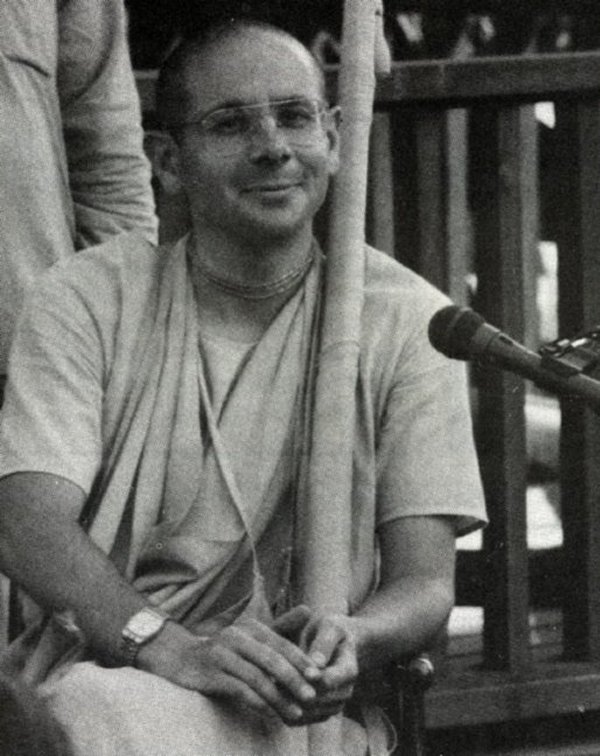
“He [Sulochan] should be transmigrated to his next body.” —“His Divine Grace” Ramesvara Maharaja (Robert Grant), the ISKCON zonal acharya for Southern California and head of the BBT, during a rare visit to New Vrindaban. Photo from Brijabasi Spirit (summer 1985). |
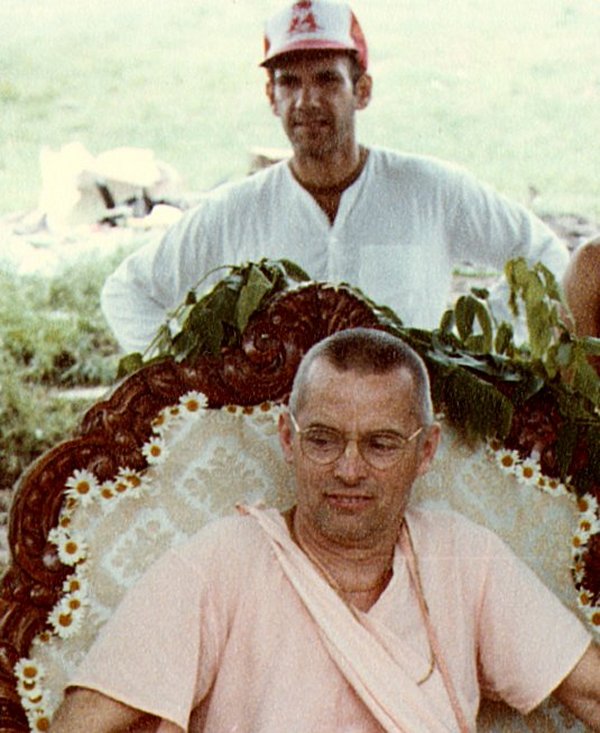
“This guy [Sulochan] is getting out of control. It would be nice if someone would silence him once and for all.” —Hayagriva (Howard Wheeler), Keith Ham’s college roomate, lover, best friend, and co-founder of New Vrindaban. Here with his life-long buddy at a Labor Day Festival at New Vrindaban (September 1984). |
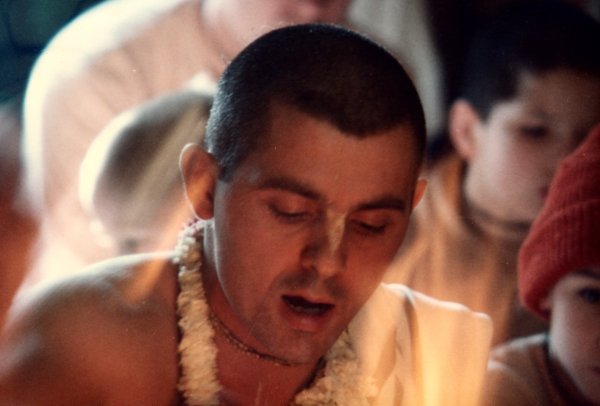
“We have to finish this thing. As long as that guy [Sulochan] is walking around, he’s a threat to Bhaktipada. He won’t be thinking anyone’s after him out in California. At least no one from New Vrindaban. If something happens out there, there won’t be as much heat on us. In time the whole thing will blow over. If everything runs smoothly, they won’t be able to prove anything.” —Kuladri (Arthur Villa), New Vrindaban's temple president, known as “Number Two.” Here officiating as a priest at a New Vrindaban fire sacrifice (1984). |
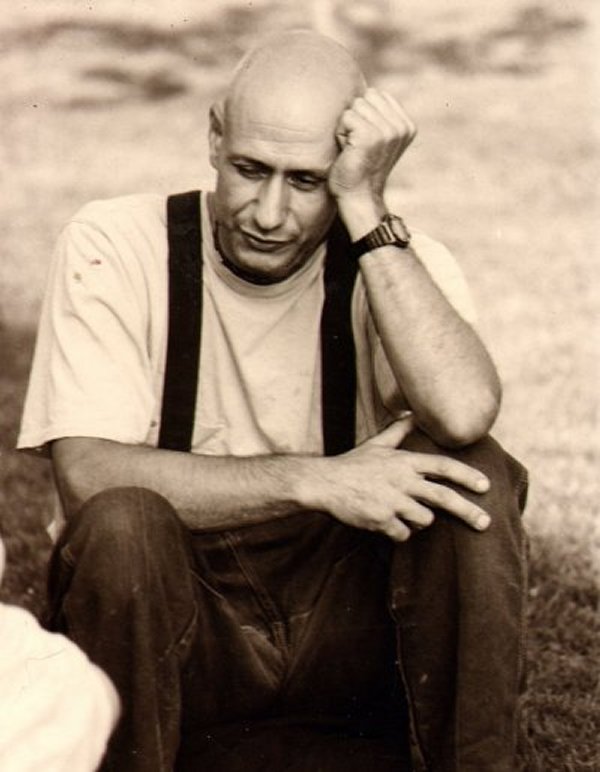 “I engineered it.” —His Holiness Tapahpunja Swami (Terry Sheldon), the president of Cleveland ISKCON, at New Vrindaban (undated). |
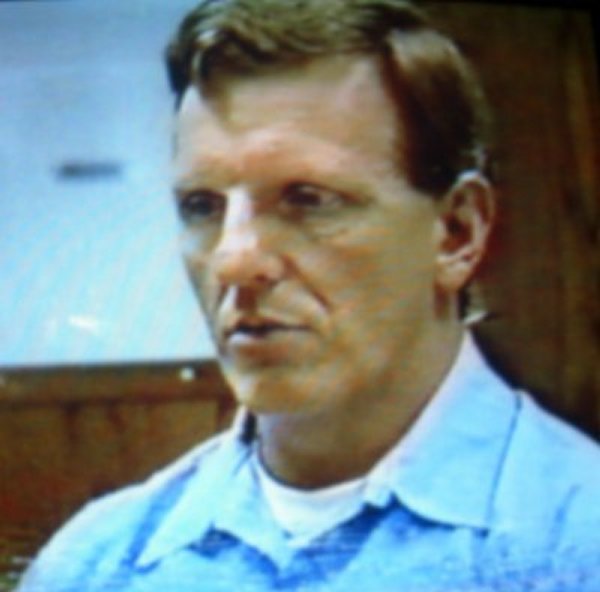
“That son of a bitch [Sulochan] is . . . going to have to be killed, and I am the one that is going to do it.” —Tirtha (Thomas A. Drescher), New Vrindaban’s chief “enforcer” and hit man, in court (undated). |
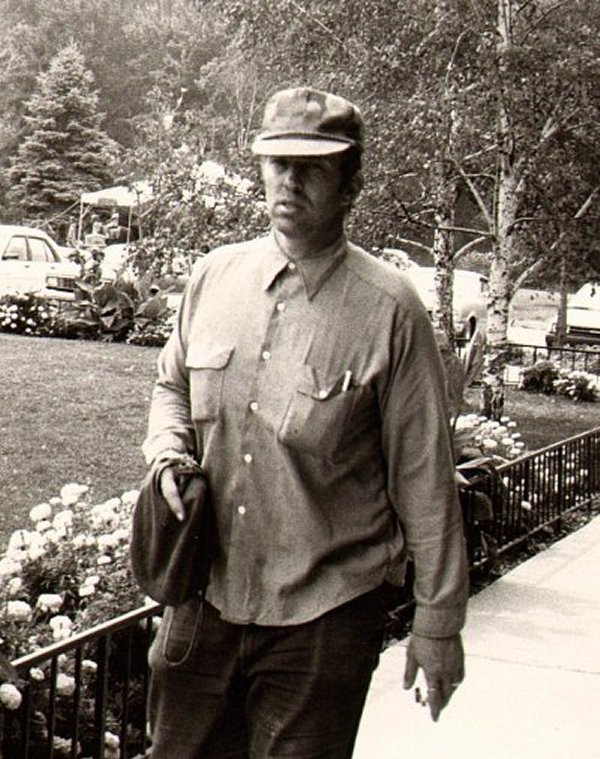
“Even if Kirtanananda Swami had . . . full sex with ten thousand children, he’s still the guru of the universe, and if you don’t accept that, you’re going to hell.” —Janmastami (John Sinkowski), Tirtha’s partner in crime, chanting japa on the sidewalk in the front of the RVC temple (September 1991). |
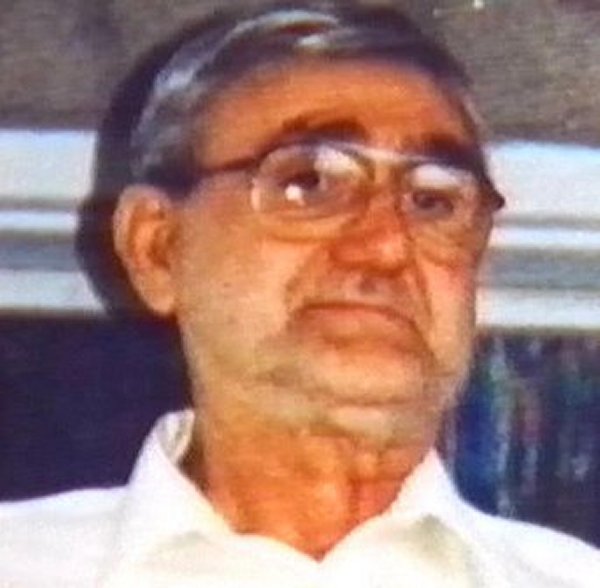
“Gorby was more fired up to destroy Sulochan than any of the devotees.” Russell “Randall” Clark Gorby, retired steel worker, longtime “friend” of New Vrindaban, and government informant (undated). |
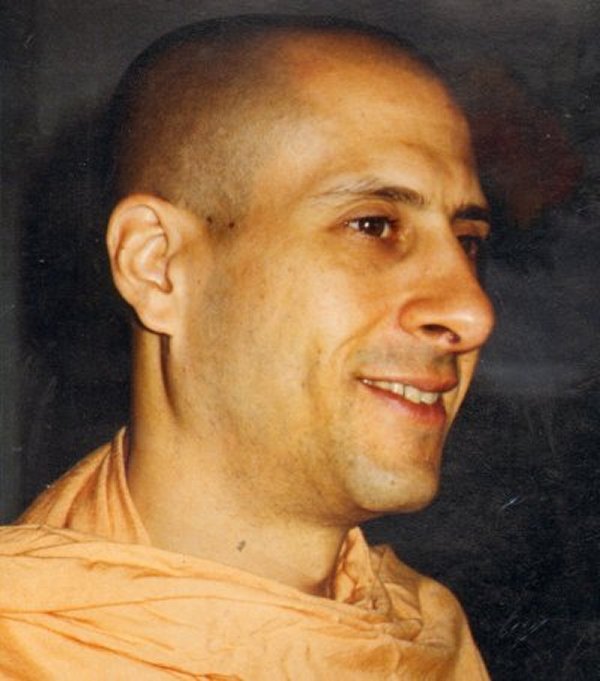
“What was I supposed to do under those circumstances? We were convinced that Bhaktipada was a pure devotee and that Sulochan was determined to murder him, so we thought we were obligated to stop some demon from killing a pure devotee by any means possible.” —His Holiness Radhanatha Swami (Richard Slavin), “gentle and humble” sannyasi dearly loved by the Brijabasis (undated). |
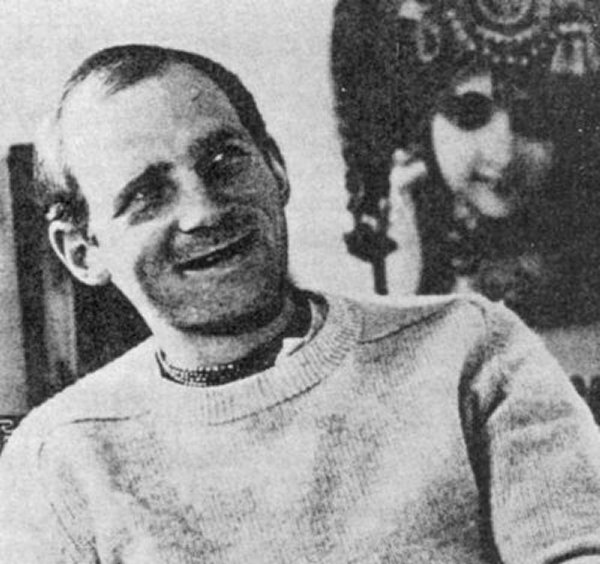
“Radhanatha Swami won’t like all this coming out. Too bad. I had to be responsible for my transgressions [and go to prison]. He should do the same.” —Dharmatma (Dennis Gorrick), Director of New Vrindaban's multi-million dollar “Sankirtan” panhandling operation. Image from Brijabasi Spirit (January-February 1977). |
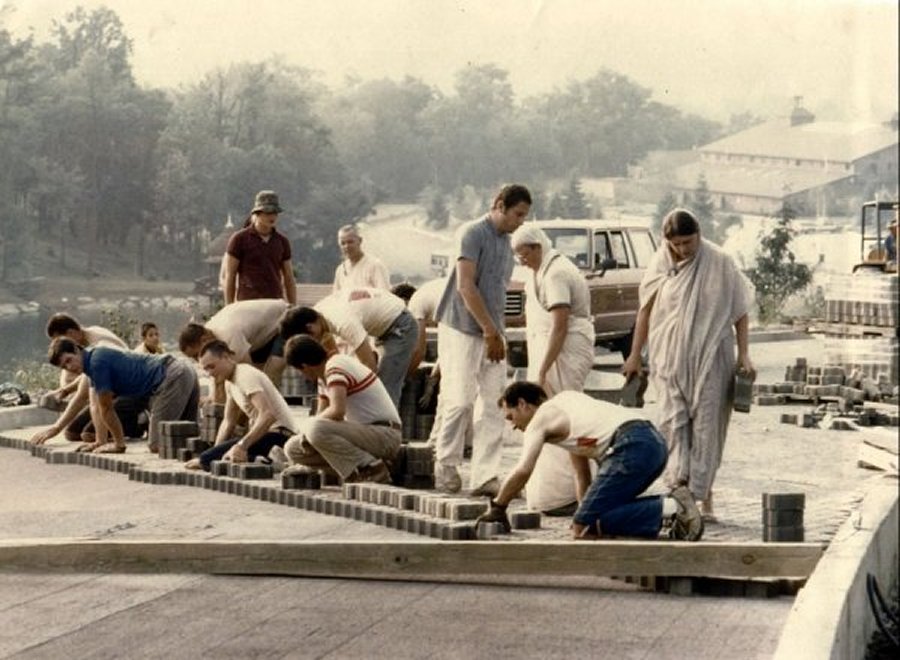 Bhaktipada supervises a road-building brick-laying marathon near the RVC temple complex (summer 1985). |
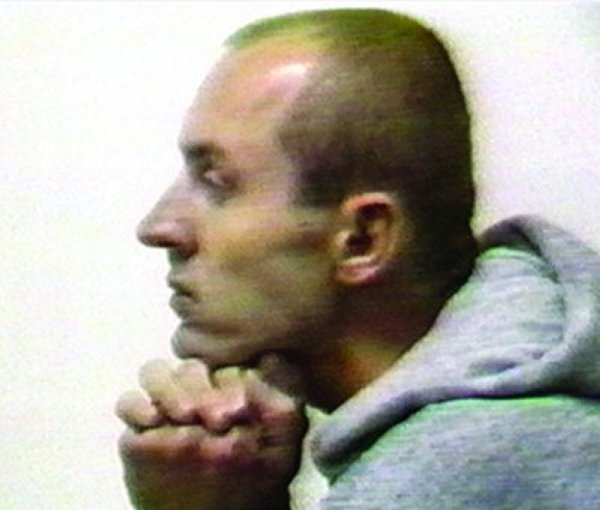
“I felt I had to either kill myself, kill Bhaktipada, or leave.” —Triyogi (Michael Shockman), the mentally disturbed visiting devotee who tried to kill Bhaktipada by smashing his skull with a three-foot-long steel rod reported to weigh twenty pounds. Here at the Marshall County Jail in Moundsville, West Virginia (undated). |
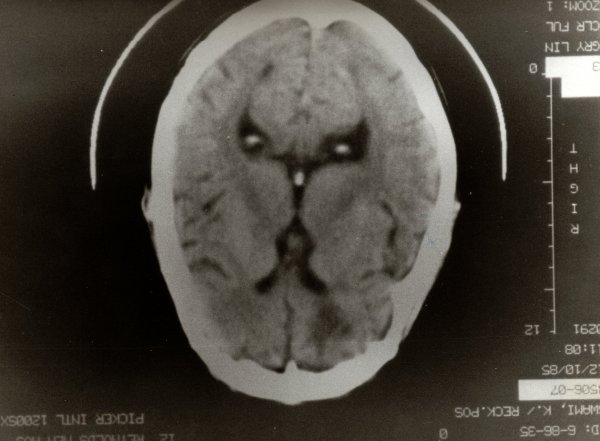
This MRI image of a cross section of Bhaktipada's brain, when turned upside down, resembles a ghastly face. Devotees believed this image proved that the half-man/half-lion avatar Lord Nrsimhadeva—the Great Protector of the devotees—had descended from Vaikuntha and incarnated within Bhaktipada’s brain to protect His saintly servant from the blows of a maniacal madman. |
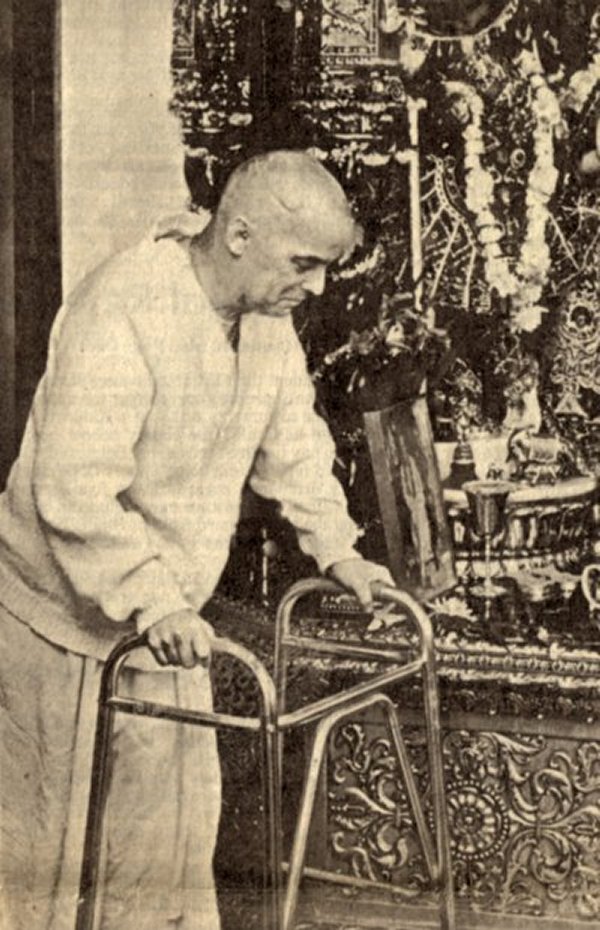
“The assailant [Triyogi] was a crazy madman. . . . who had been influenced by Sulochan.” —Bhaktipada, ambulating with great difficulty using a walker, in the temple room at his home (December 4, 1985). He had been ten days in a coma, three weeks on the critical list, and 26 days in the hospital. |
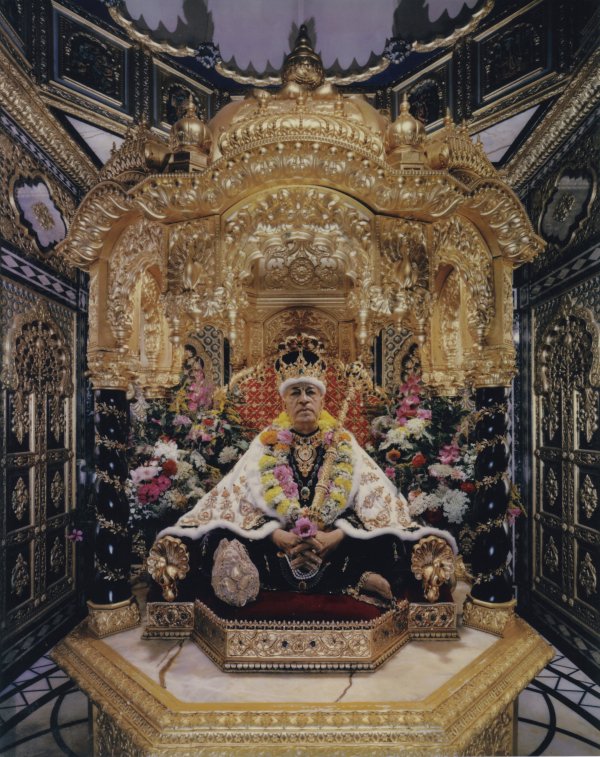
“Dressing Prabhupada at the Palace with all opulence again will solve all the problems of ISKCON.” —Bhaktipada, speaking of the murti (statue) of Srila Prabhupada at His Palace of Gold, adorned with gold-plated crown, scepter, jewelry, and embroidered cape (November 1985). |
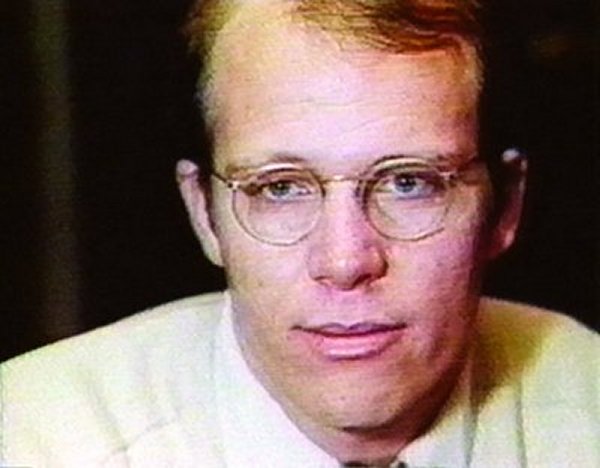 “They are constantly watching me. I know some morning I will go to sleep and not wake up.” —Sulochan (undated) |
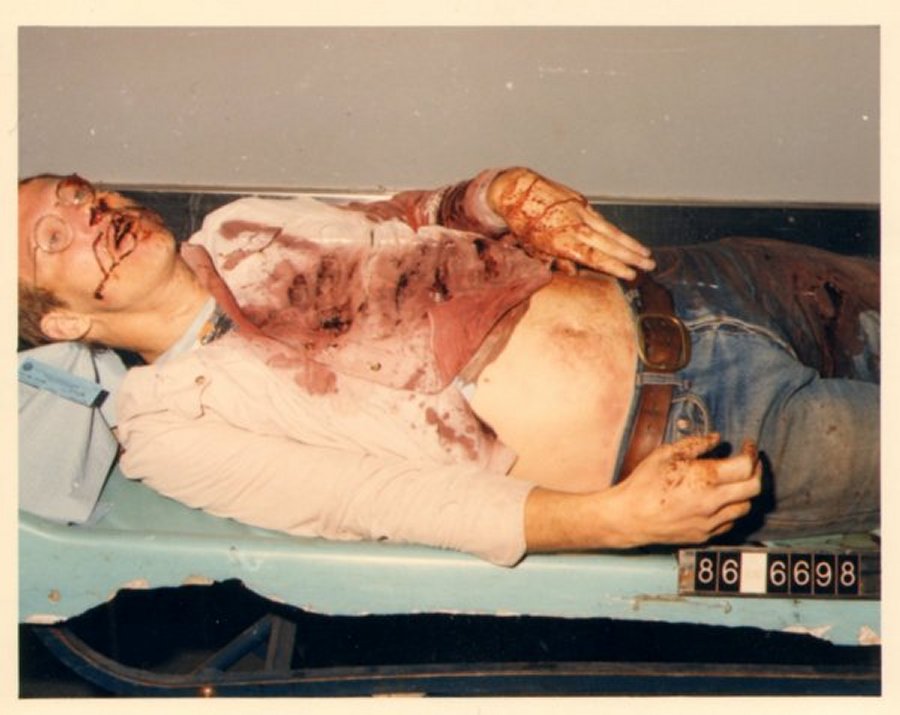 “Upon my death, that’s when everything will unfold. When I die, then everyone will see.” Sulochan’s lifeless body at the Los Angeles morgue (May 22, 1986). |
Comments